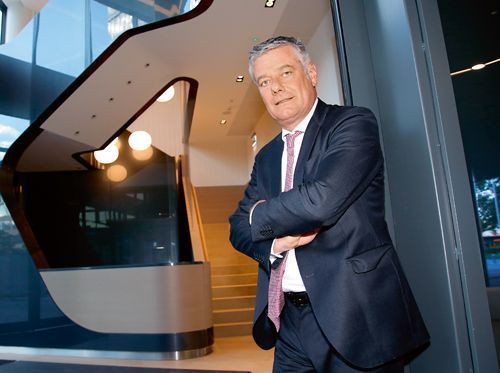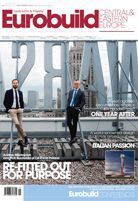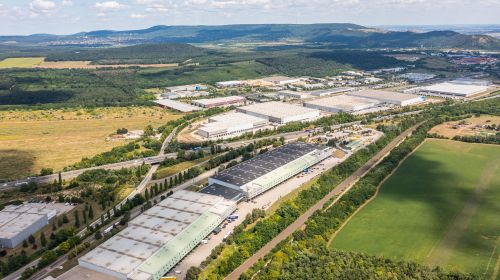Italian passion
Architecture
Anna Pakulniewicz, ‘Eurobuild CEE’: The interior lobby design for Proximo is your first project in Poland, am I right? Are you planning any others?
Paolo Pininfarina, president, Pininfarina S.p.A.: Yes, this is our first project in Poland and I’m confident there will be soon new ones, hopefully with the same developer, Hines, with whom we’ve been able to give life to and deliver an innovative project in a very short time, optimising the resources available. Other players with a solid reputation and a strategic vision are definitely welcome and I’m confident that we’ll be able to create value and custom-made solutions for them too. Pininfarina operates, in fact, in a variety of sectors, offering the business solutions combining design, marketing and branding able to bring innovation and give a strategic advantage to its partners in the market.
I believe Poland is a fertile country for Pininfarina as I can see that there has been a big change over the last ten years. The last time I was here was in 2005 and this was just starting. Now design here is booming, just like in London, There is a very positive approach towards new development and the future – and the economy is doing well. Everything is in progress and it is a positive place to carry out new innovative projects. Proximo is a good first synthesis of Pininfarina’s philosophy, which will be soon followed by others.
Would you like to work in Poland without Hines? Is it all about Hines – or rather that Poland is somewhere you want to try your hand at?
My goal is to bring our strategic design thinking to Poland. Pininfarina has matured over the years – it has great deal of different know-how: in residential, in commercial structures, in airports, underground stations, public spaces, hotels; so we have the capabilities to conceive new architectural and design experiences that enable us to open up new scenarios.
We can see a great potential here as there are many fields which Pininfarina can be involved in. There is much to be done. We will have created dedicated teams of architects and designers and I will personally manage and supervise the outcomes consistent with the Pininfarina style.
Where exactly do you see the potential for your company in Poland?
One example is the metro. The line that has been partly completed recently is set to be extended further. So there is huge potential for Pininfarina there, as we could apply both our ability in architecture and in transportation – to design the new metro stations and trains, creating an overall experience. Or we could be working on a new airport: we have recently won an international design competition for the new Istanbul Airport Air Traffic Control Tower beating archi-stars like Zaha Hadid and Massimiliano Fuksas thanks to our multidisciplinary competencies. Or it could be designing new sports venues, like a new stadium. Or luxury hotels – why not! Everywhere you find the right partners, there is the potential to do this. And if you work with a partner who shares your vision, you can do great projects. With Hines this has worked well. They had the responsibility for the whole project – and Pininfarina was responsible for creating a jewel capable of enriching it and making it different. We cooperated with the Rolfe Judd Studio, designing the main lobbies and the courtyard, which is the first port of call for the office user.
We, as a 360° design house, are able to design everything and one of our strong points is to work as strategic partners on the design of the most important areas of the city, creating an overall experience that sets new standards in terms of innovation and the quality of life.
Do you need to see and learn about a city before you could start to design anything there?
Every time we start a project we study the context first. All our projects have strong references to the landscape and to the mindscape in which they will be situated. Our architectural style is able to adapt to different cultures, either to create outstanding icons or to be gently mimetic. Two recent examples of the versatility of our style: a skyscraper in Singapore characterised by a strongly distinctive style and a beach club in Capri, delicate intervention on a protected area. In Singapore we designed an iconic skyscraper that won many awards. It was characterised by outstanding shapes and colours: red, black and wooden. When I went to Singapore to talk about the project two, three years ago, I remember my colleague there asked me: “Have you seen the buildings in Singapore? They can be any colour… as long as they’re white. So you can choose any colour as long as it’s white.” You know how it ended? The building won the people’s choice award and today it can be undoubtedly considered as one of our most iconic buildings. Warsaw is a very dynamic city. It is not traditional, not stuck with one kind of architecture. I think here, in Warsaw, there is the potential to create a landmark, a vertical building able to characterise the area. The fear of doing something different, new and innovative doesn’t exist here.
Because everything architectural in Warsaw is different from each other?
There are several projects that represent the period in which they have been built, symbols of different styles that have characterised different epochs. So this is a city that speaks of its different experiences.
This is better for you?
Better? Absolutely! The mixture of the different heritage, different ideas, different points of view... this is the mother of innovation.
Can you see the difference, the gap, between Poland and other locations you have designed projects for?
Well, London, for example. Innovation, design, architecture – have changed the aspect of London over the last century. Now there’s the Shard and all the skyscrapers smoothly coexisting with Buckingham Palace and Big Ben. I am a fan of the modern architecture. London is utterly surprising. It is the heart of modern architecture. And this city, Warsaw, is going in the same direction, like Berlin and Milan. Turin, my city, is starting now, leaving conservative attitudes behind it. If I could quote the great Italian architect, Renzo Piano on the occasion of the opening of the first skyscraper in Turin, the Intesa Sanpaolo building: “Nobody wanted this building, everybody was against it, but we made it.” At the end of the day, the future is unavoidable. We, at Pininfarina, have the same approach. The future is the only place we can go – and we have the mission to envision new extraordinary scenarios able to improve the quality of life and to merge them with local culture and tradition.
If you had to describe a Pininfarina building, what would be the most important characteristic?
A Pininfarina building has to be beautiful, innovative, but also functional. We start from functionality and then we conceive the shapes accordingly. We apply our DNA, which is composed of elegance, purity and innovation, to give life to fluid, natural, round shapes. In 2018 there will be two openings of towers in Brazil: one in São Paolo and the other in Balneário Camboriú. The latter [the Yachthouse – ed. note] will be the tallest tower under construction in Brazil, with 75 floors.
What is the most important aspect for you when you design – the shape, the colour, the structure, the light?
The most important aspect is the people who use it. We analyse their behaviour, their needs, their desires, and we build everything around them. Then we consider the goals of the project and the context in which it will be situated. After this careful analysis we start designing. In reference to your question, I would answer the shape! We approach architecture imagining sculptures animated by life. Going back to my heritage and Pininfarina’s roots, my grandfather modelled wood to create special shapes. So when modelling a skyscraper, the shape is the most important feature of the building. In the shape of our creations you can recognise the Pininfarina touch. I suggest you go and see the stairs in the lobby of Proximo’s building B. It is a three-dimensional expression of Pininfarina’s design, a sculpture in movement. Of course, when designing there are the colours, the materials, the finishing that give a building character... but the heart of it is the shape. The shape provides a real sense of passion.
Alfa male
Pininfarina was originally set up as a car design and coach manufacturing company by Battista “Pinin” Farina in 1930. It has produced notable car designs for Alfa Romeo, Ferrari, Fiat and Lancia. As well as vehicle design, the group is also active in industrial, aviation, nautical, architectural and interior design. His grandson, Paolo Pininfarina, joined the company in 1982. He has since had experience working on projects for Cadillac, Honda and General Motors. In 1987 he was appointed chairman and CEO of Pininfarina Extra, a Pininfarina group company operating in the industrial, furnishing, architectural and nautical and aeronautical design sectors. Under his management, Pininfarina Extra developed more than 500 projects for companies such as Chivas Regal, Coca-Cola, Costa Coffee, Juventus, Lavazza, Petronas, Martini&Rossi, Motorola, Samsung and Unilever. Paolo became a board member of parent company Pininfarina S.p.A. in 1988 and in 2008 was appointed president. In 2011 he was recognised as the French ‘Italian Personality of the Year’ for his contribution to the Autolib electric car sharing programme in Paris.





















































